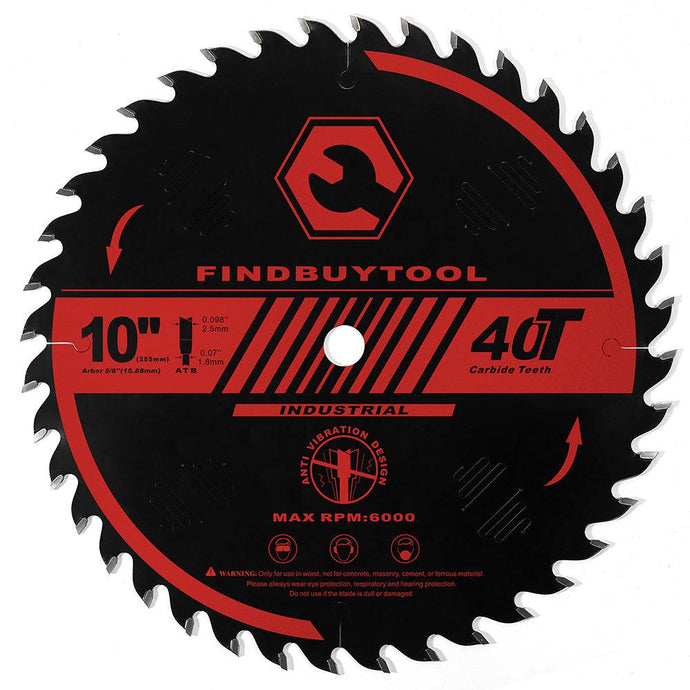- बिहार कलां, पीलीभीत रोड, इज्जतनगर, बरेली<
- +91-8938008532
When it comes to woodworking, construction, or even simple DIY projects, one of the most essential tools in any toolkit is the circular saw. But the real key to unlocking the potential of this powerful tool lies in the blade. Circular saw blades are the unsung heroes of cutting tasks, dictating the quality, speed, and accuracy of each cut. With a variety of materials, designs, and tooth configurations to choose from, the right circular saw blade can make a world of difference in the outcome of your work. Selecting the perfect blade is not just about ensuring clean cuts but about enhancing the overall efficiency of your projects.
A common mistake many make is assuming that all circular saw blades are alike. However, the material and design of a blade are specifically suited to different tasks. Woodworkers, for example, would not use the same blade that's perfect for cutting metal or plastic. The key is in understanding how each blade is engineered. Most circular saw blades are made from high-strength steel, but what sets them apart are the coatings and teeth designs that determine their effectiveness on different materials. Blades designed for cutting wood, for instance, typically have carbide-tipped teeth, which are incredibly durable and stay sharper for longer, allowing for clean, precise cuts through hardwoods and softwoods alike.
The number of teeth on a blade plays a crucial role in the smoothness of the cut. Blades with fewer teeth, such as those designed for ripping through wood, remove material quickly but leave a rougher finish. These blades excel at fast cuts along the grain. On the other hand, blades with more teeth, like those used for crosscutting, create a finer finish but require more time to complete the cut. Choosing between a ripping blade and a crosscutting blade comes down to the nature of the project - whether you prioritize speed or smoothness. Some blades, known as combination blades, offer a balance between the two, making them versatile enough for different tasks without switching between blades.
Apart from woodworking, circular saw blades are also tailored for cutting through tougher materials like metal and masonry. Metal-cutting blades are usually crafted with reinforced teeth to withstand the heat and friction generated during cutting. Abrasive blades, made from materials like aluminum oxide, are ideal for slicing through masonry, concrete, or stone. These blades grind rather than cut through the material, making them the go-to choice for heavy-duty construction work. Each material requires a blade capable of handling the specific stresses involved in cutting through it, emphasizing the importance of picking the right blade for the task at hand.
Durability is another important consideration when choosing a circular saw blade. Poor-quality blades not only wear out quickly but can also damage the material being cut, leading to wasted resources and extra costs. High-quality blades, often tipped with tungsten carbide or similar hard materials, resist wear and dulling even after extensive use. This means fewer blade replacements, saving time and money in the long run. Furthermore, a dull blade is more likely to cause kickbacks, a dangerous situation in which the saw jerks back unexpectedly, posing a risk to the user. A sharp, well-maintained blade not only improves the efficiency of the task but also enhances safety.
Understanding the kerf, or the width of the blade's cut, is also vital for precise work. A thinner kerf requires less power to cut through materials, which is particularly useful for projects involving dense or hard woods. Thicker kerf blades, however, provide greater stability, reducing the chances of wobbling during cuts and ensuring straighter lines. Depending on the material being cut and the power of the saw, the choice between a thin-kerf or standard-kerf blade can influence the ease and quality of the cut.
Proper maintenance of circular saw blades further extends their lifespan and ensures peak performance. Cleaning the blades regularly to remove pitch, sap, and debris prevents them from overheating, which can cause warping or dulling. Some blades come with special non-stick coatings that reduce friction and heat build-up, prolonging their sharpness and durability. Sharpening the blade when necessary or replacing worn-out teeth is another critical step in maintaining optimal performance. A well-maintained blade not only delivers better results but also ensures a smoother, safer cutting experience.
Investing in the right circular saw blades can transform your projects, making each cut cleaner, more accurate, and less time-consuming. Whether you're a professional contractor or a weekend DIYer, understanding the role of the circular saw blade in achieving precise, efficient cuts is essential. From the material of the blade to the number of teeth and the type of cut, every aspect contributes to the quality of your work. The right blade doesn't just make the job easier - it elevates your craftsmanship to a whole new level.
